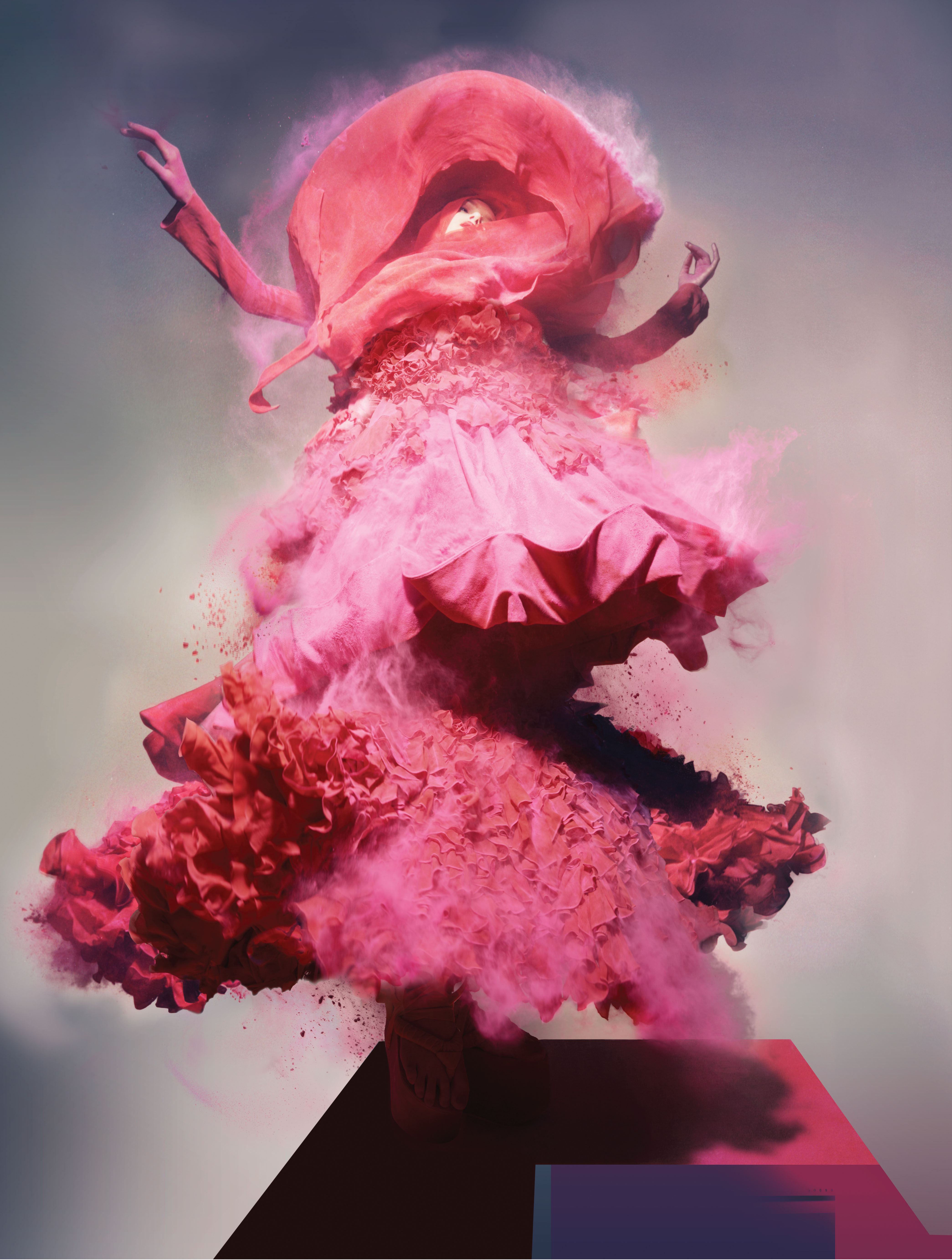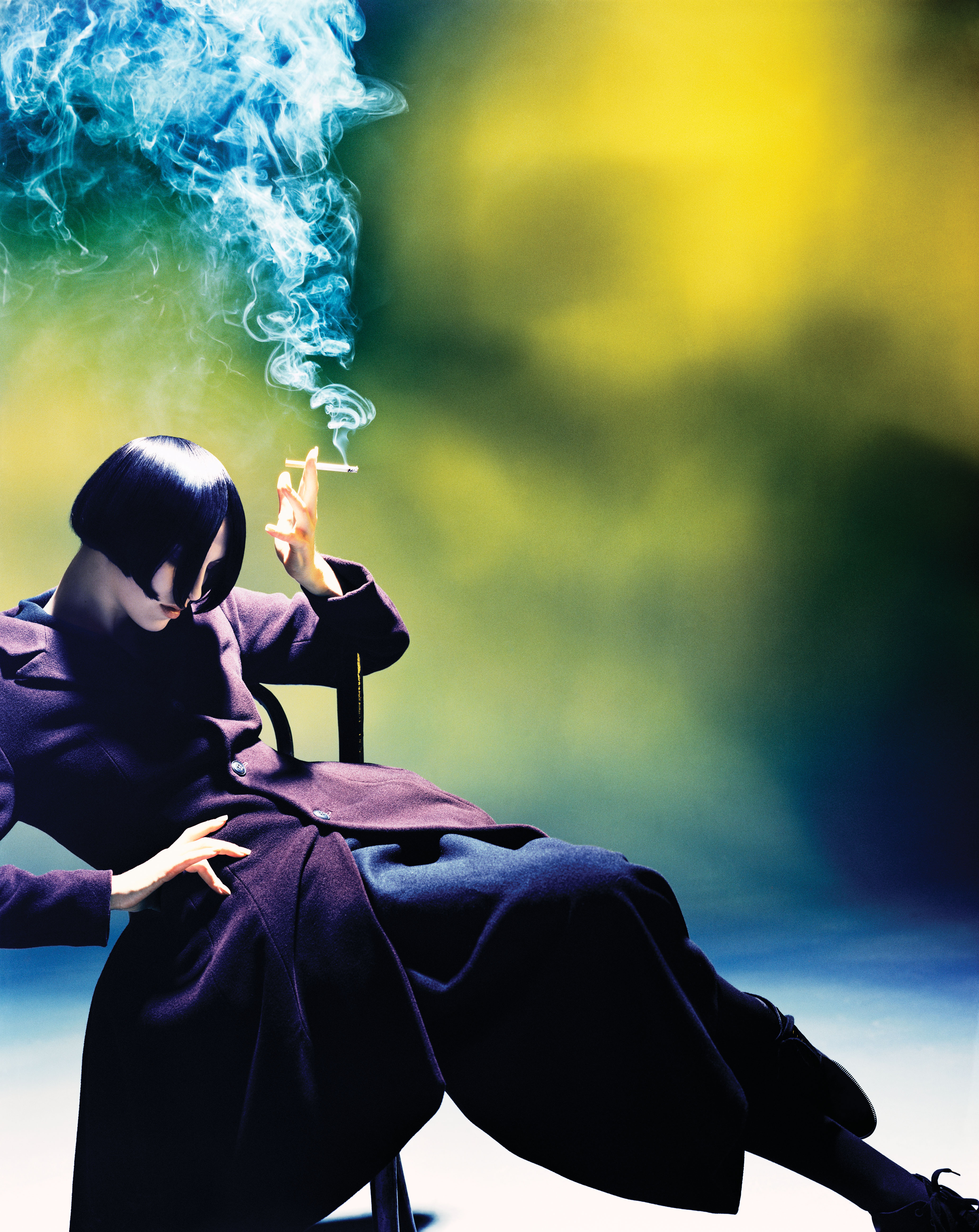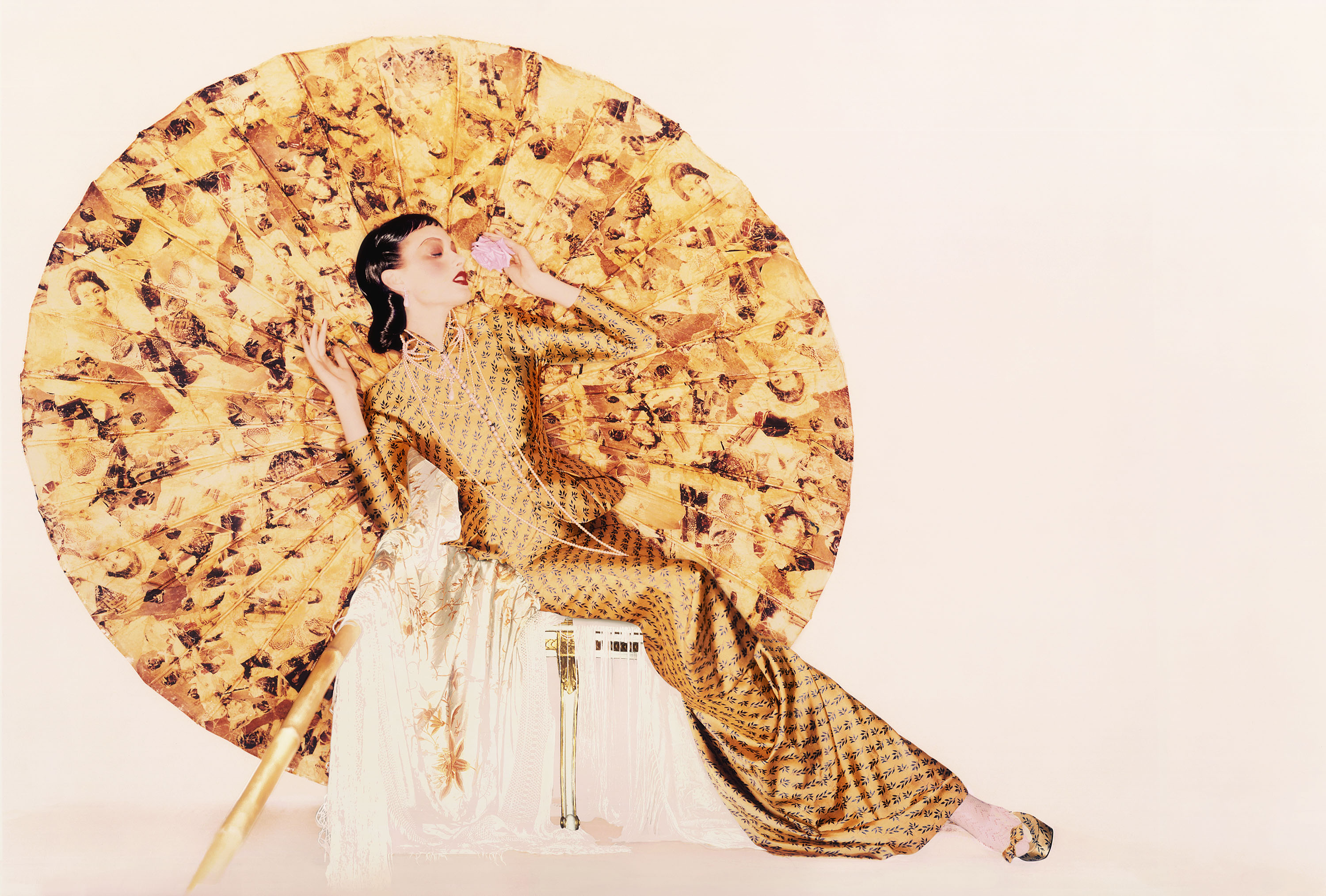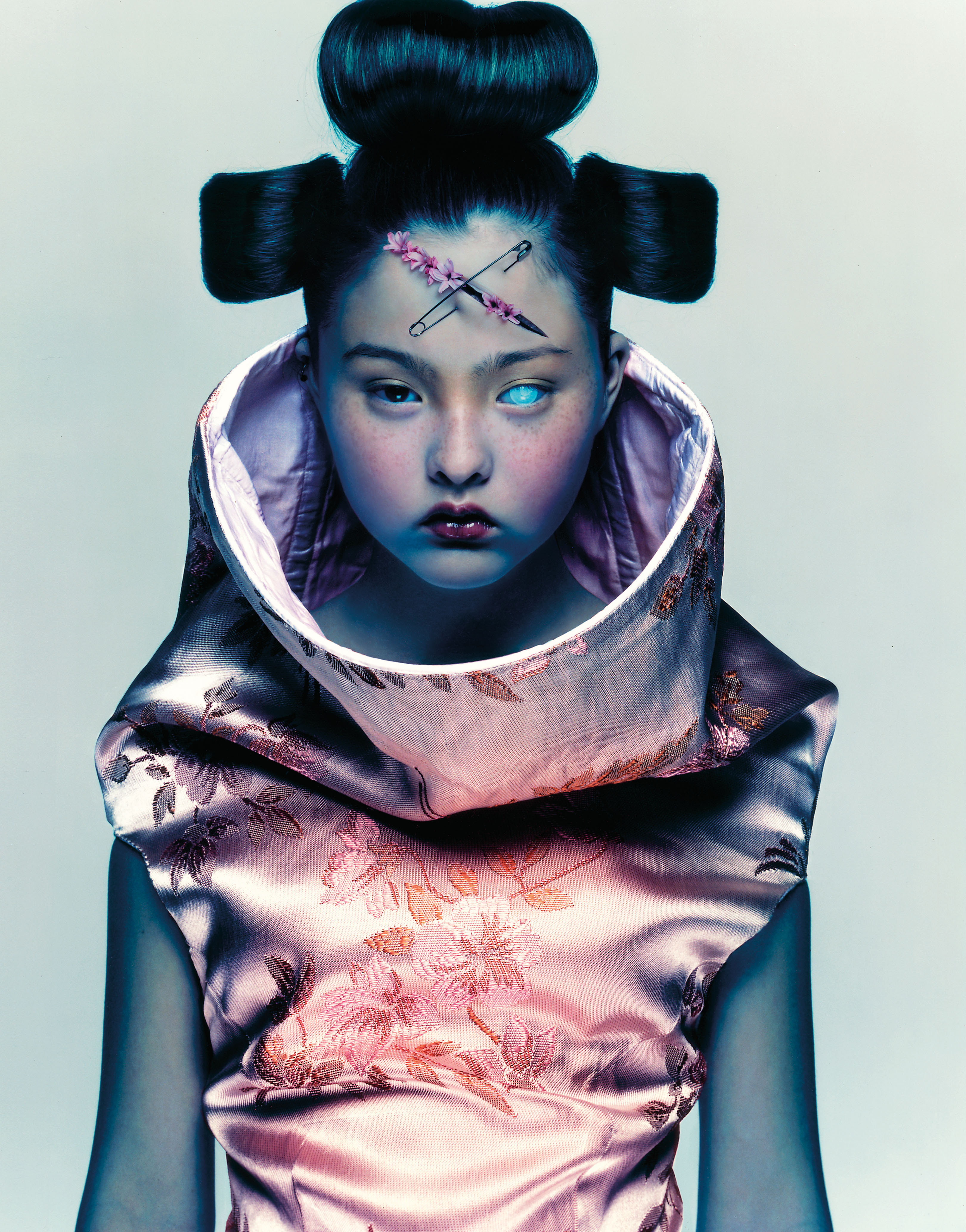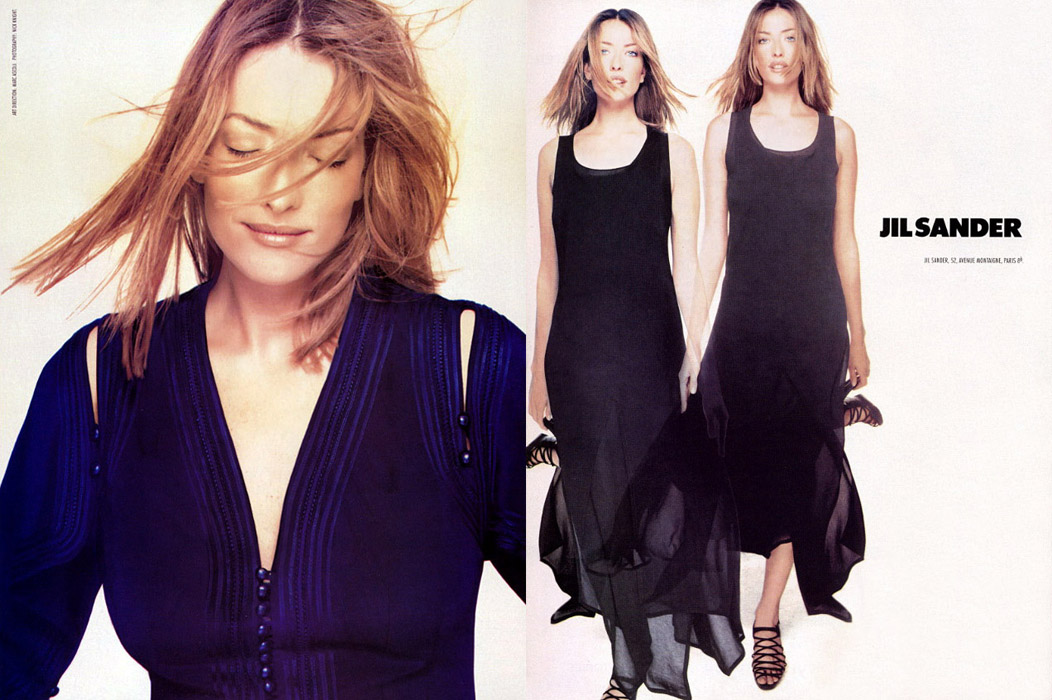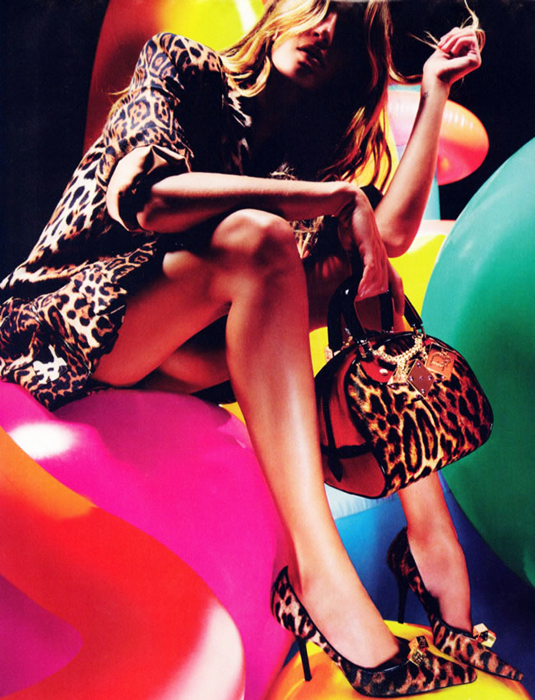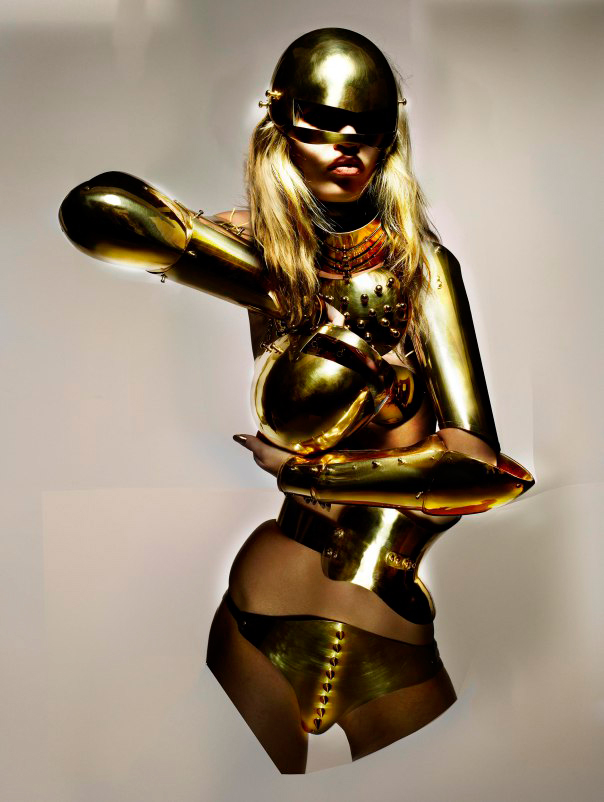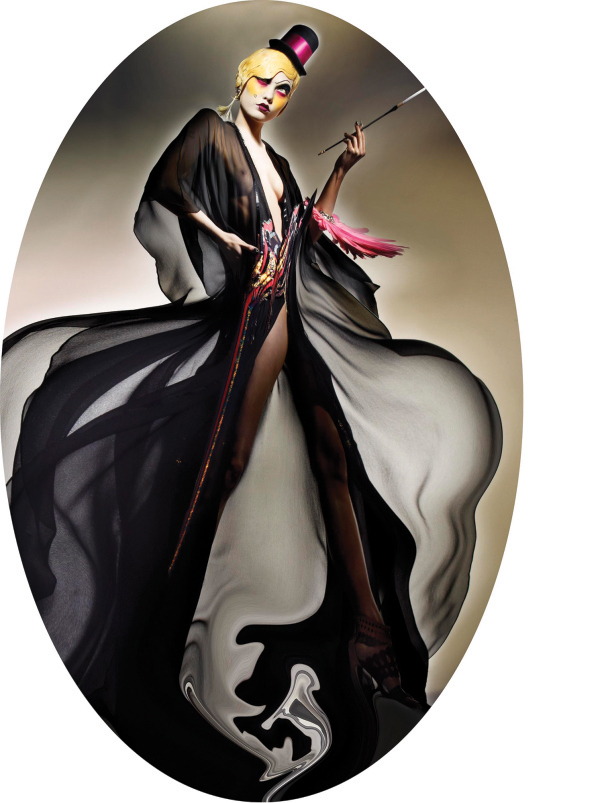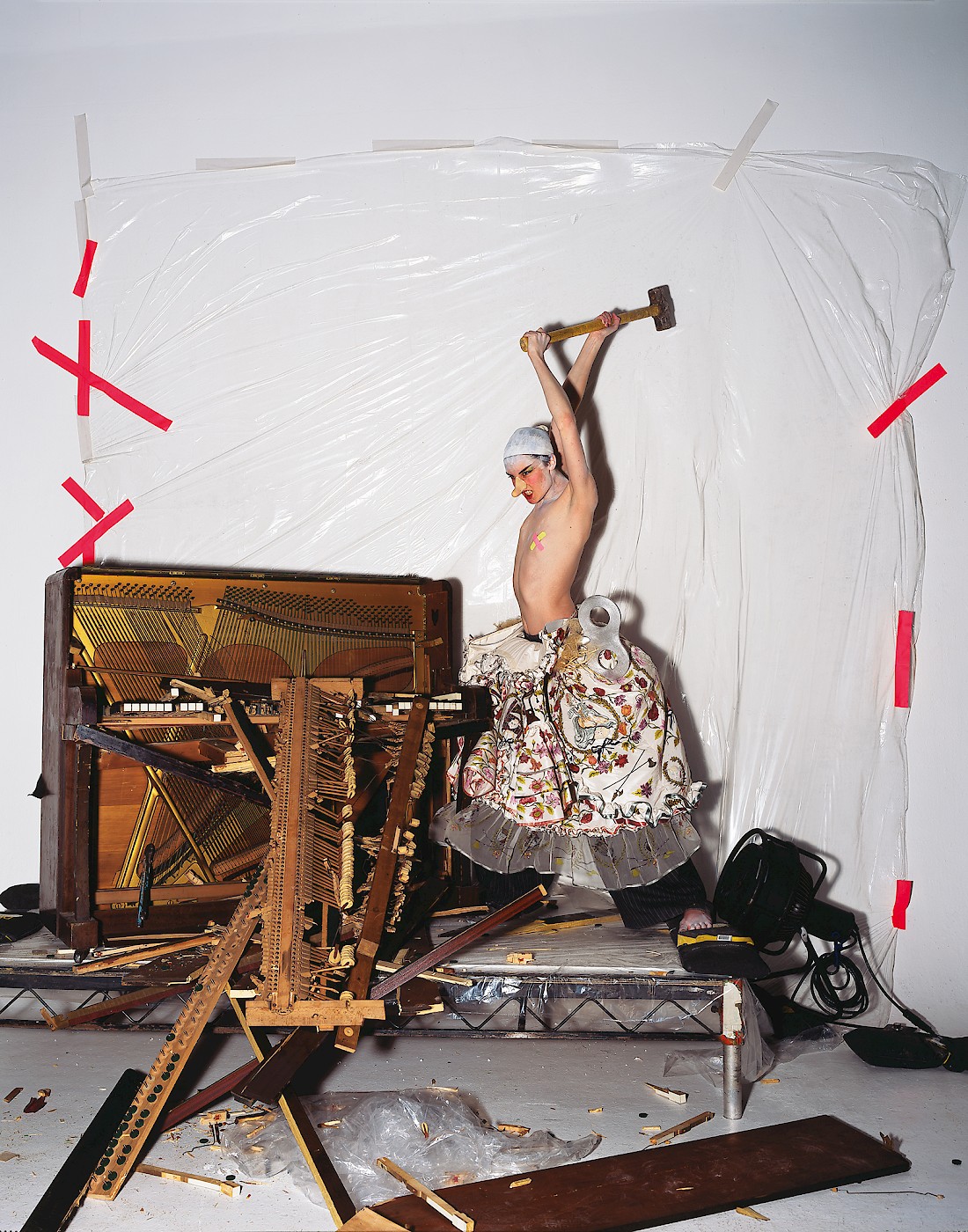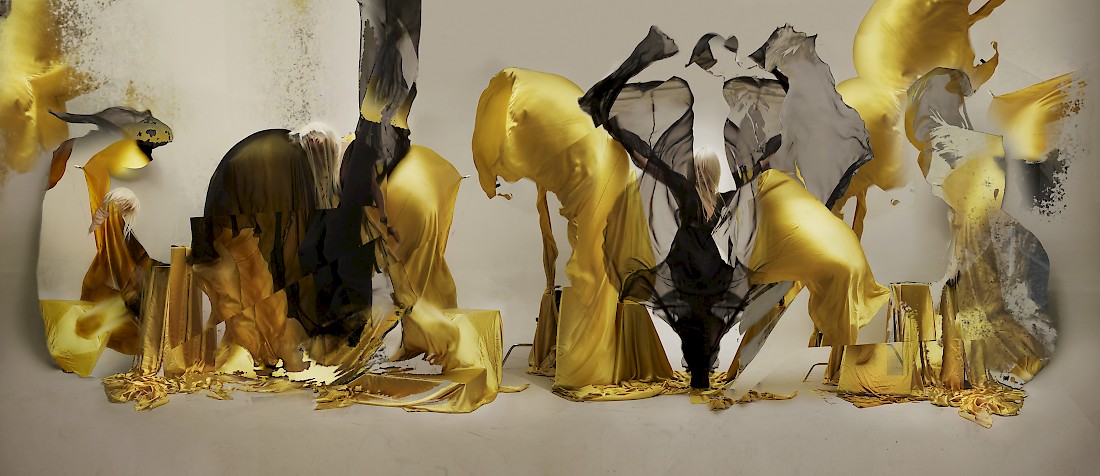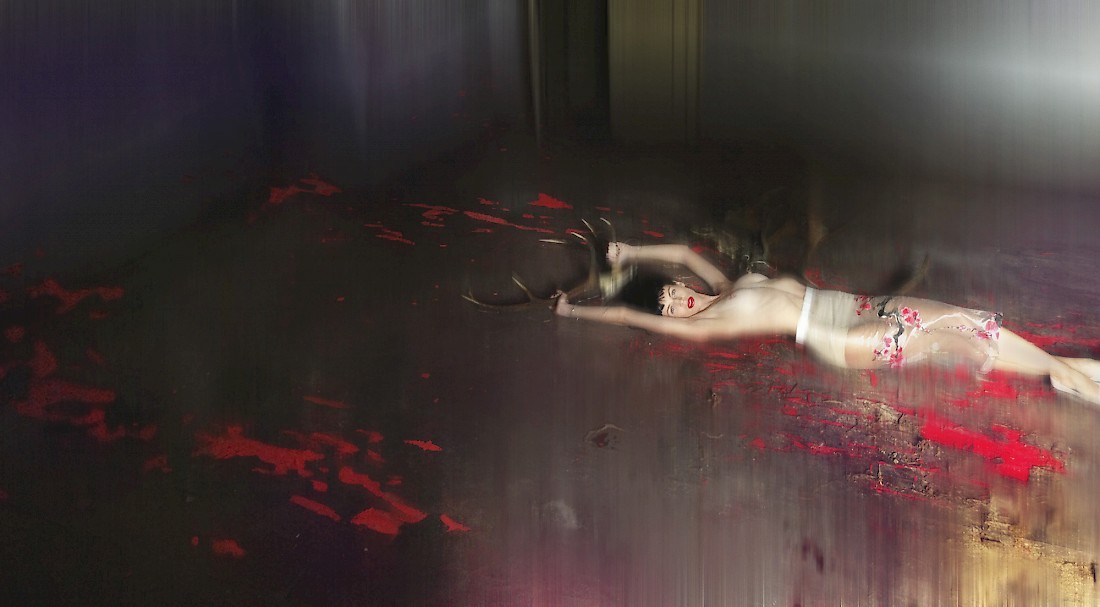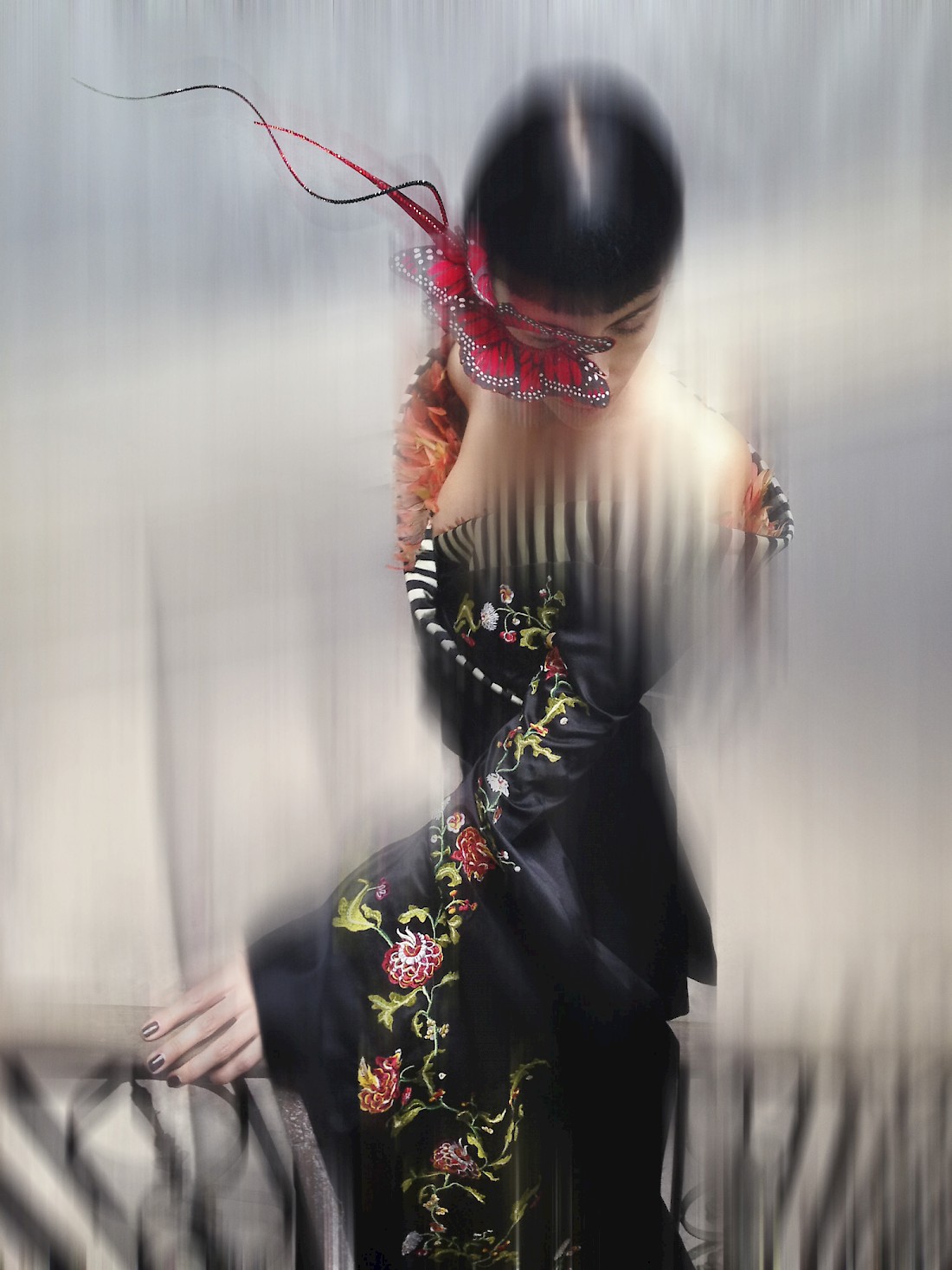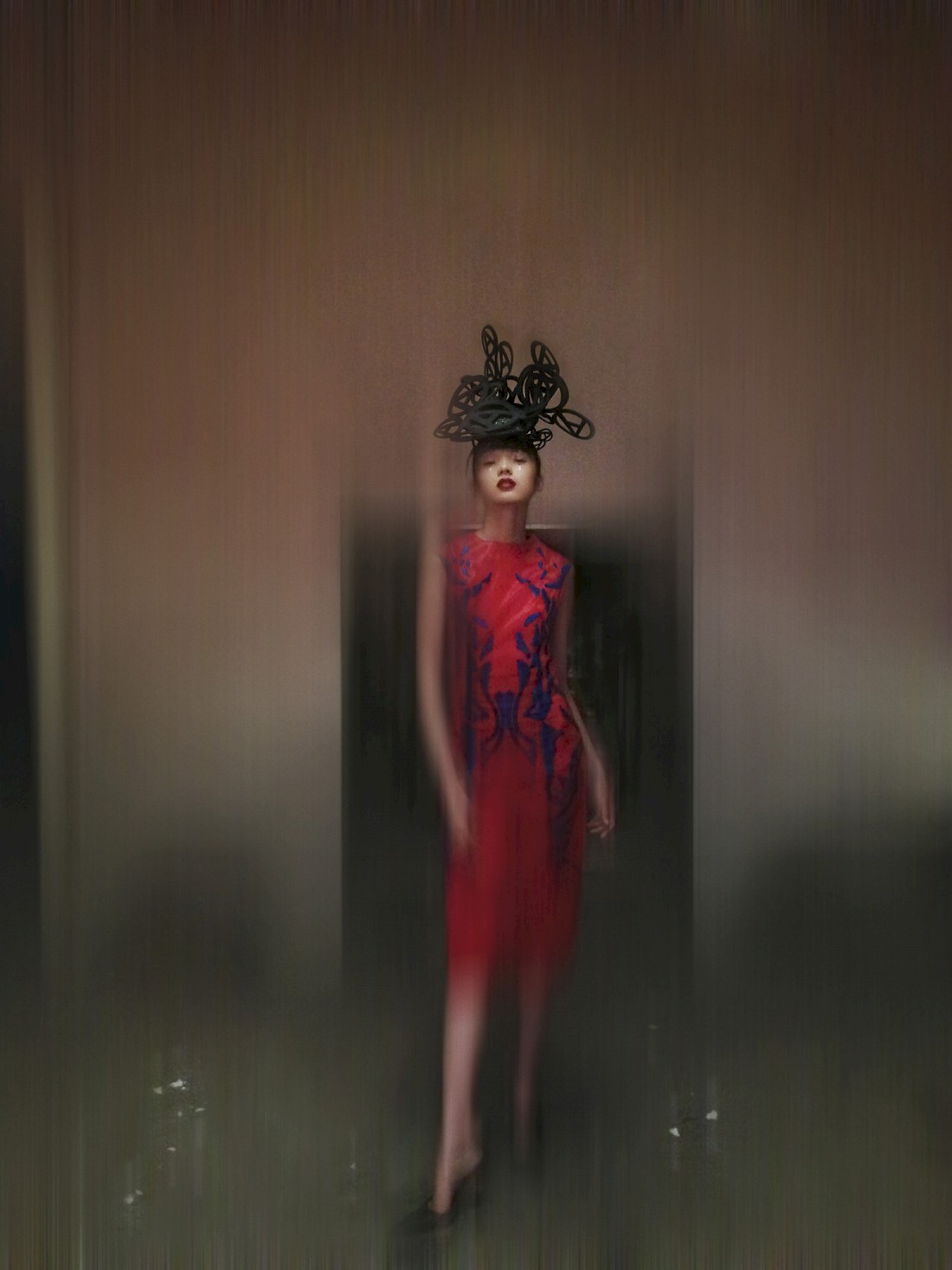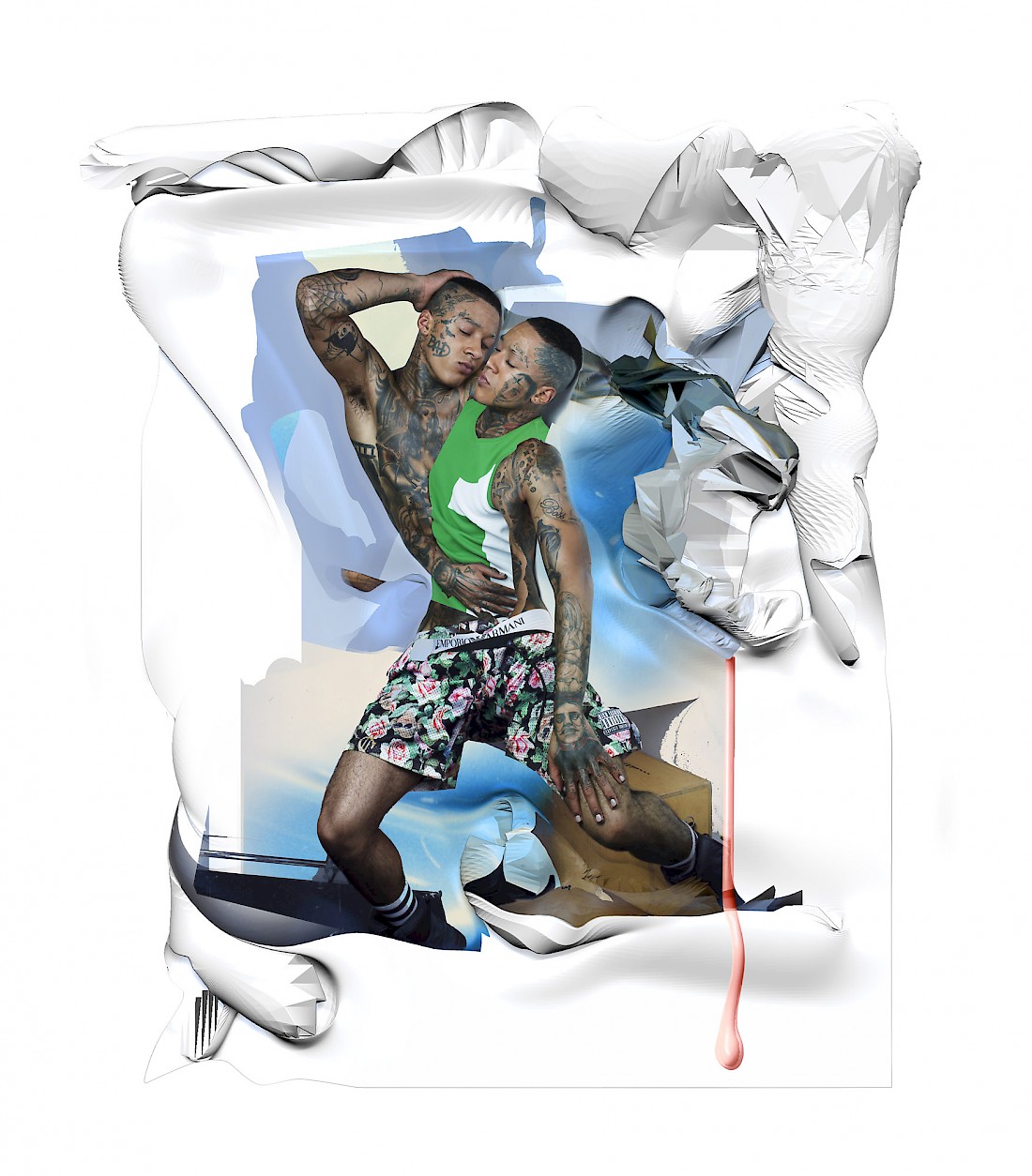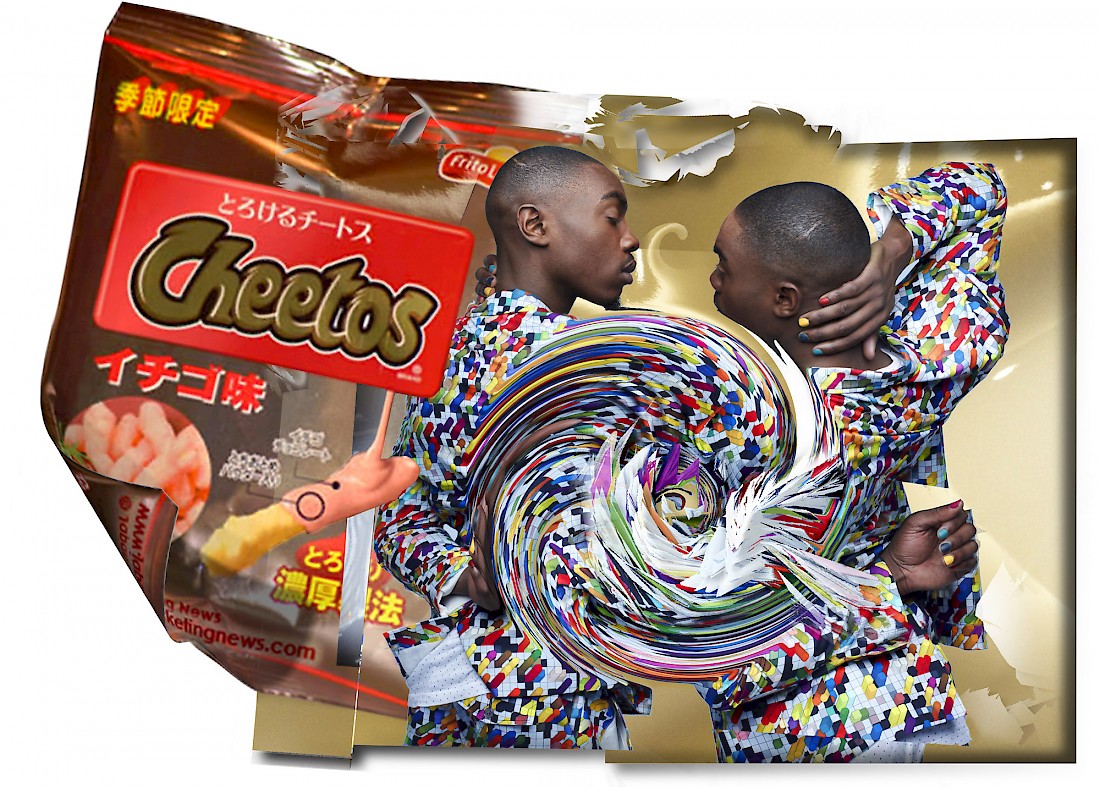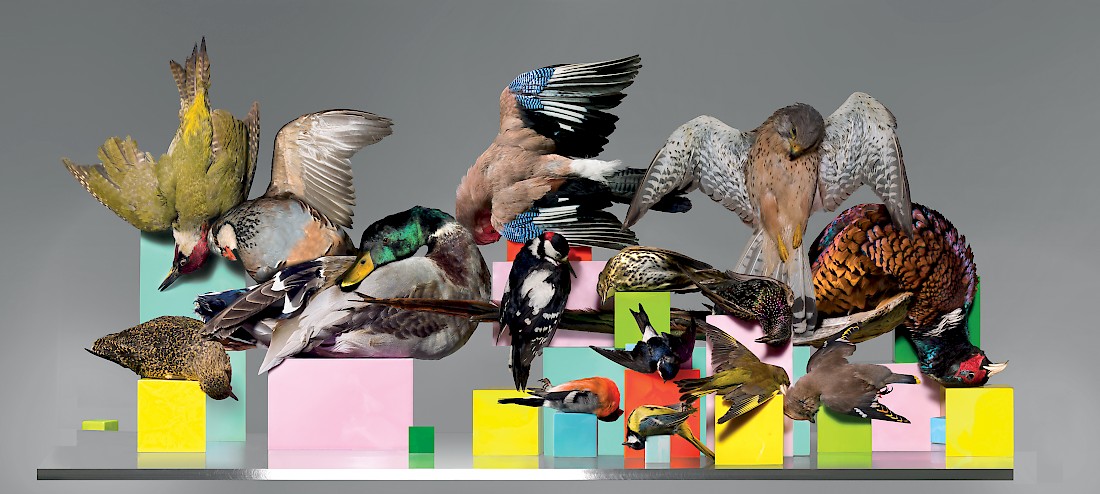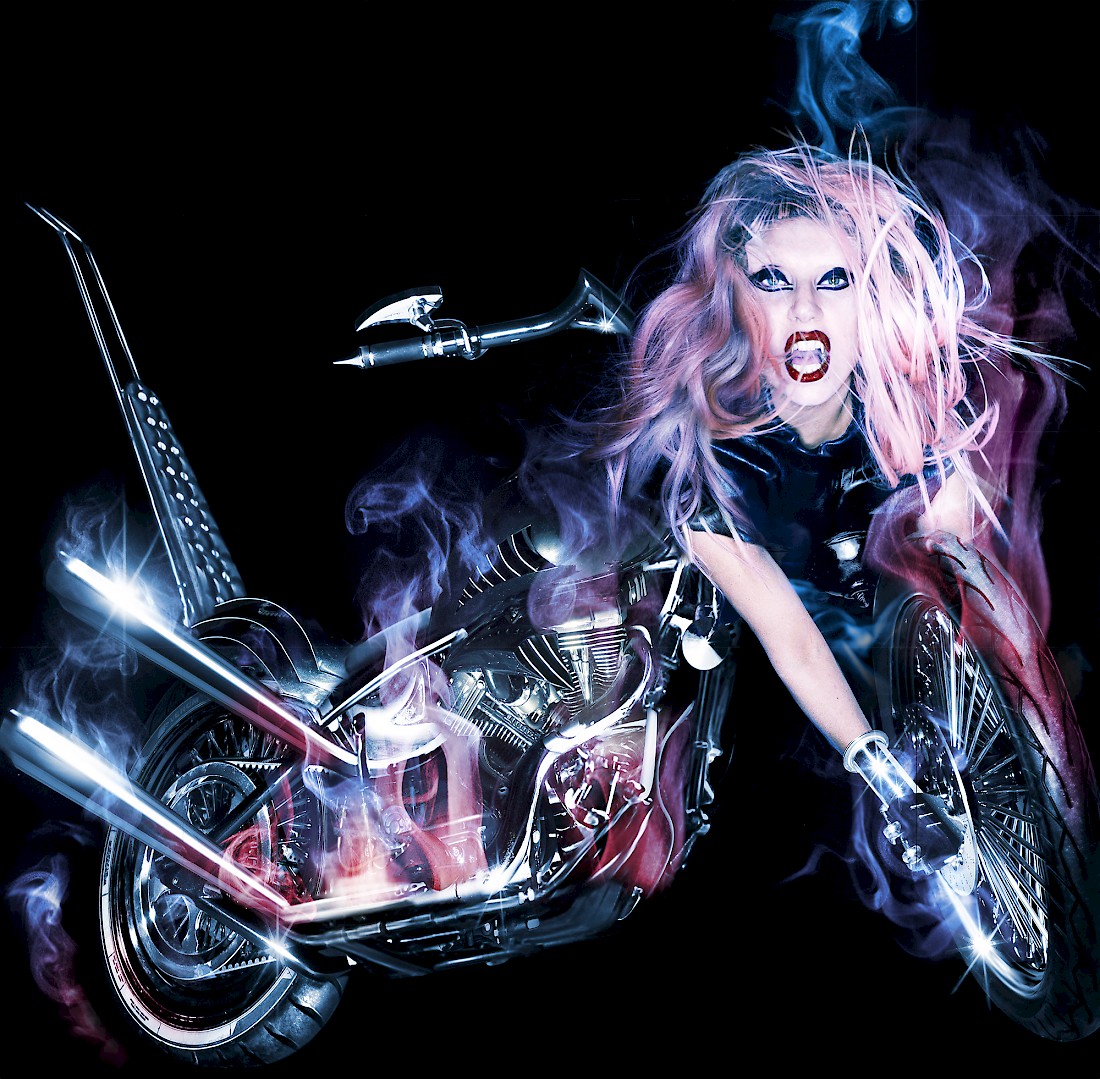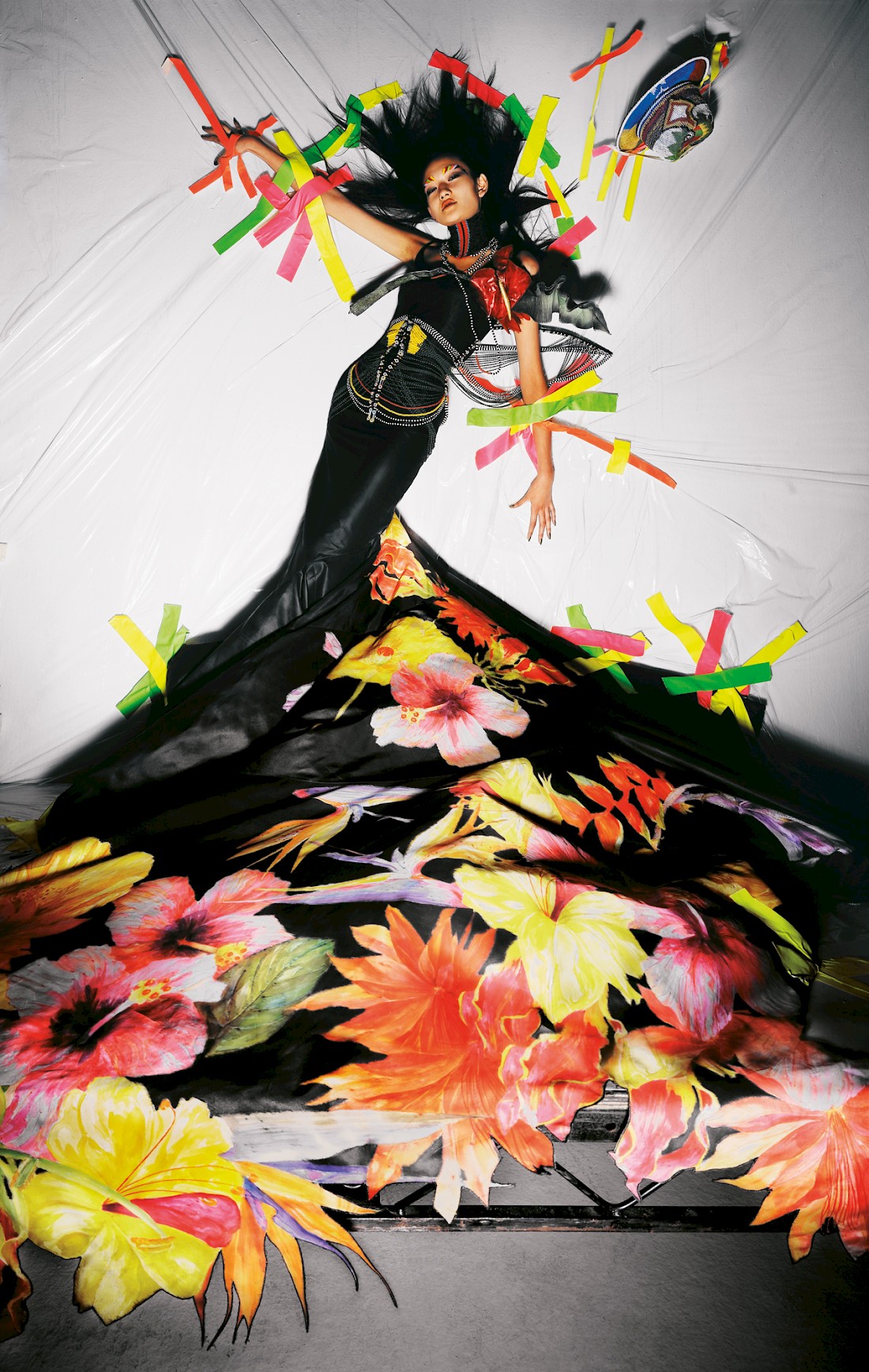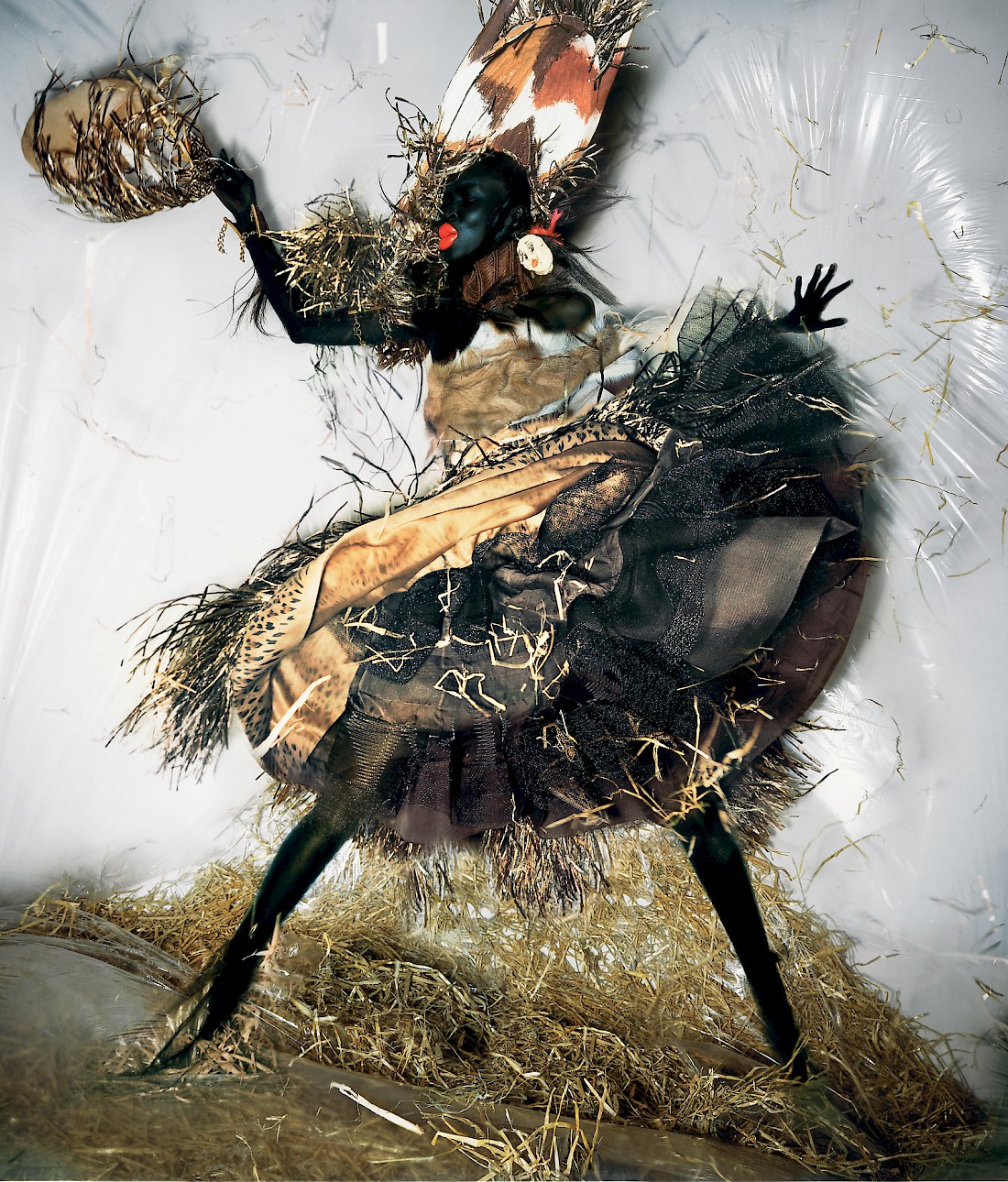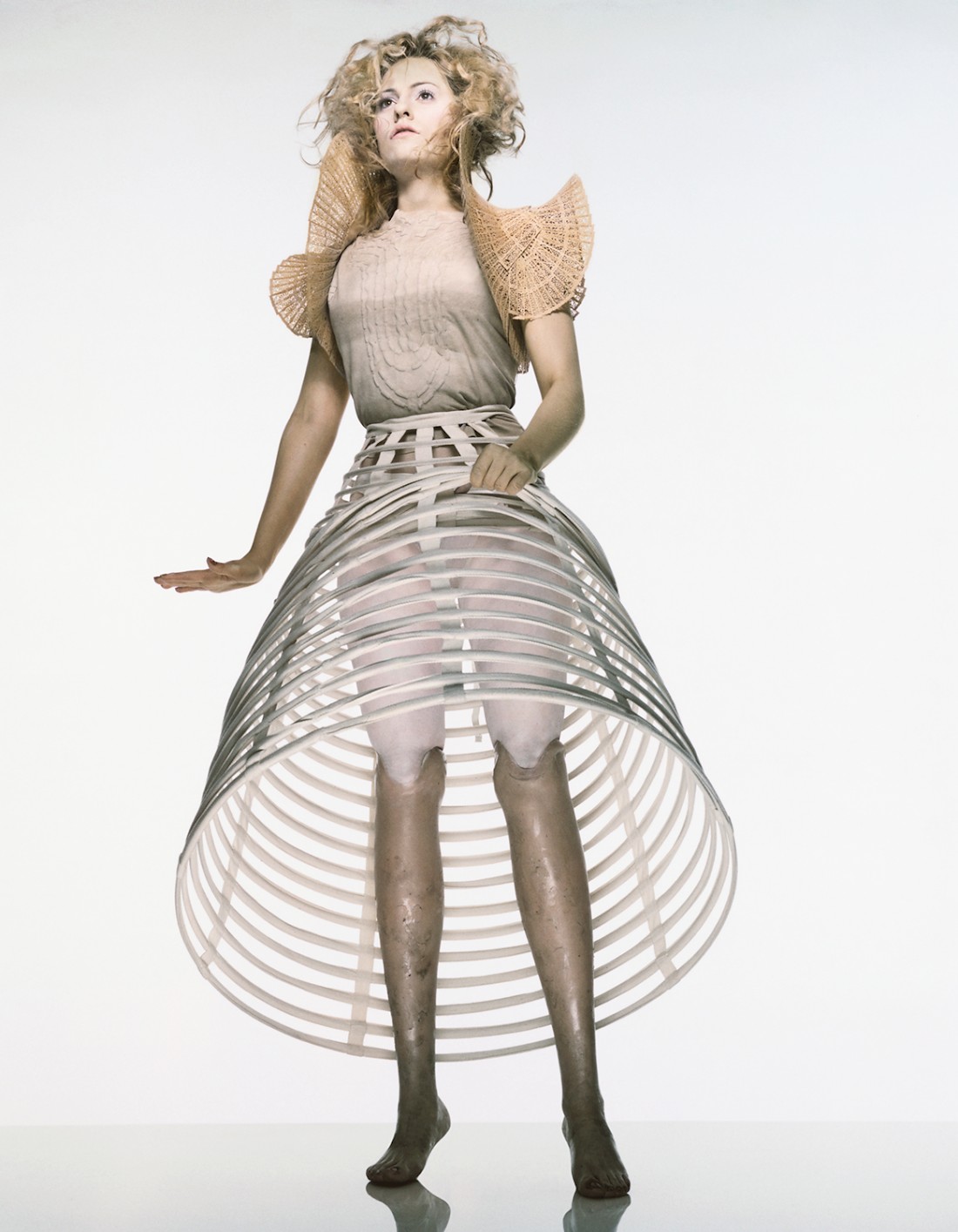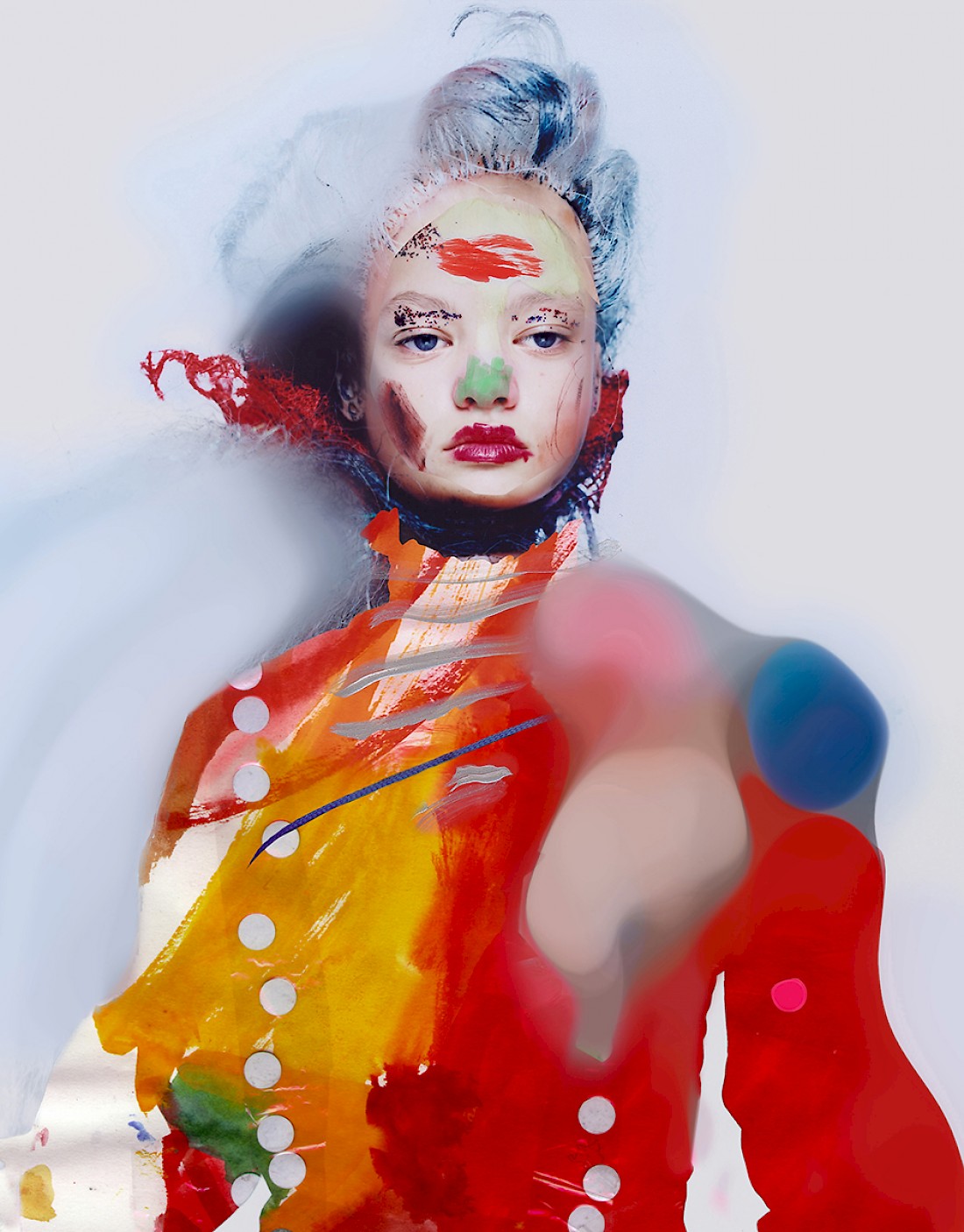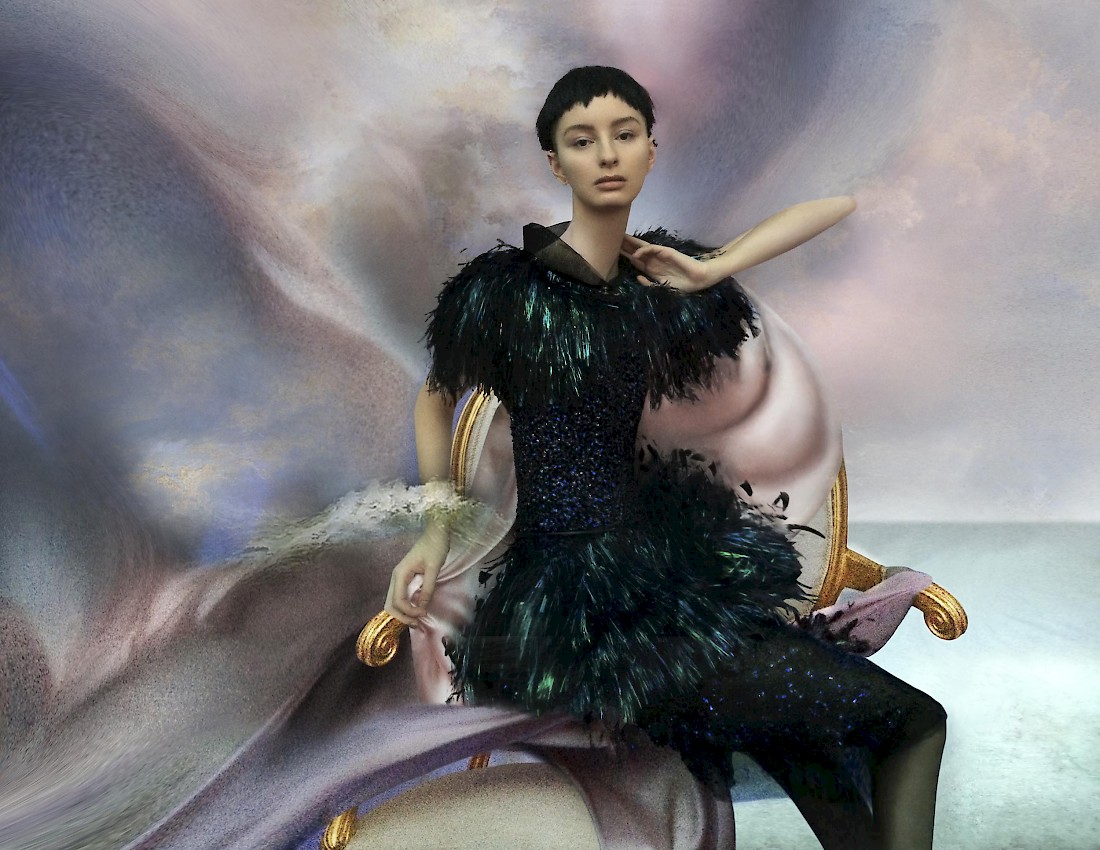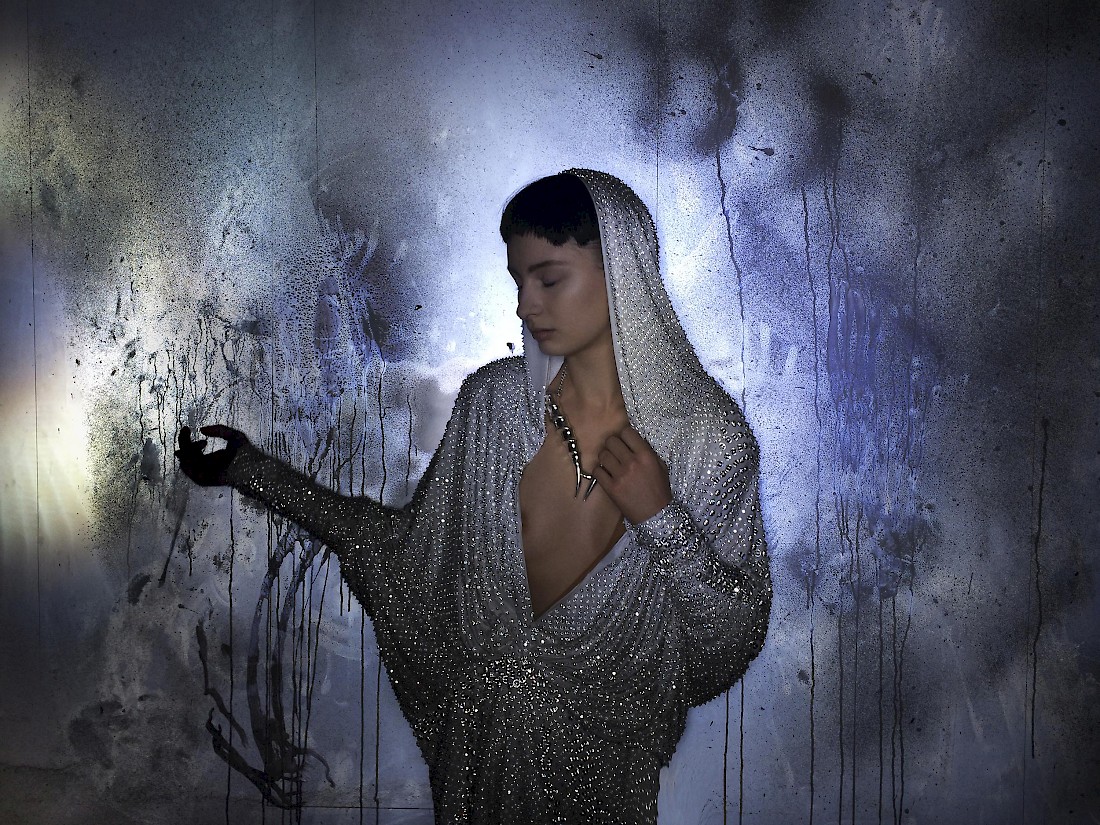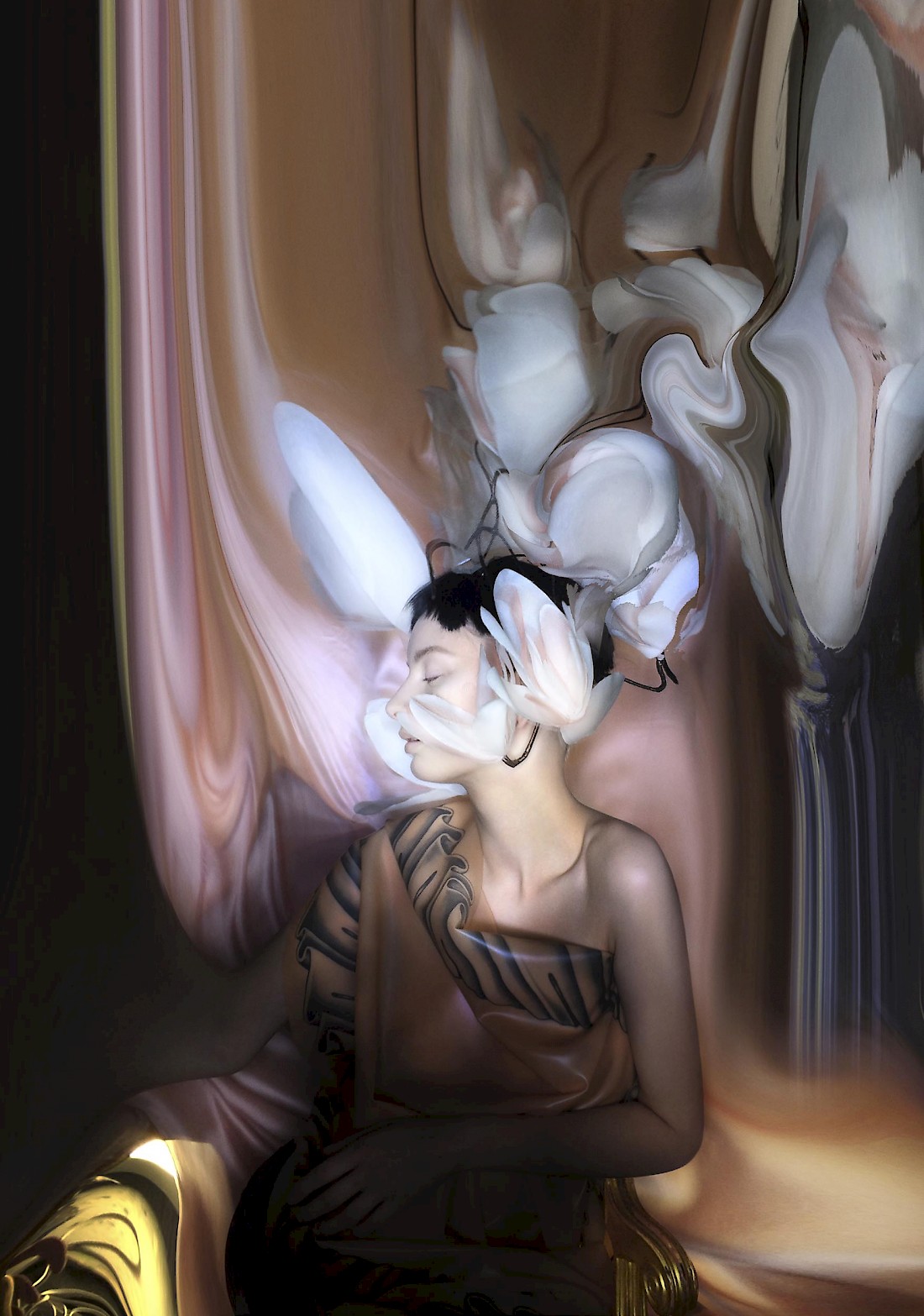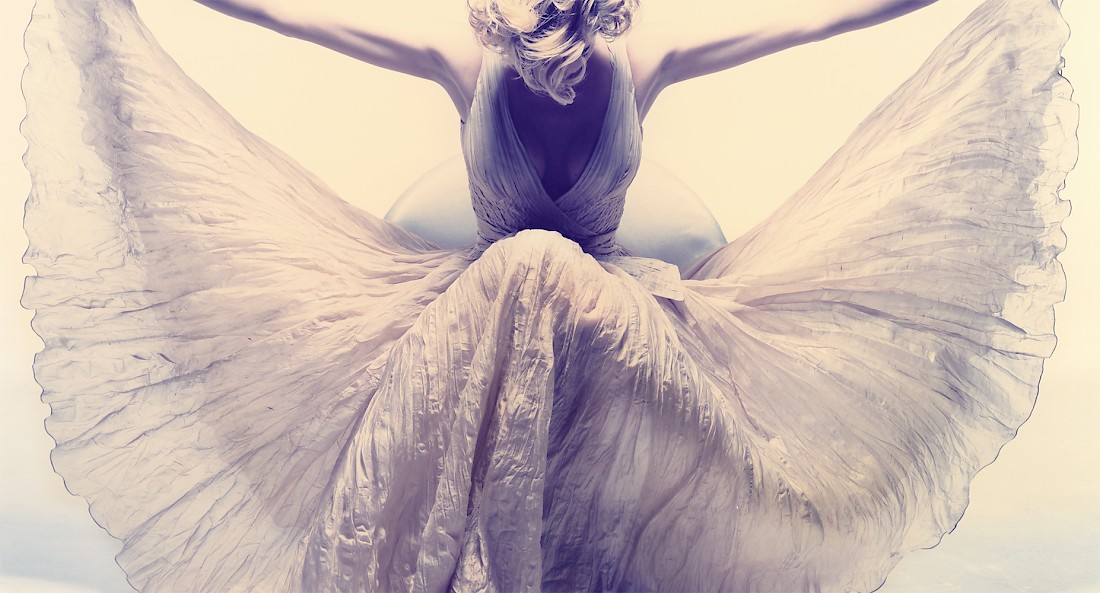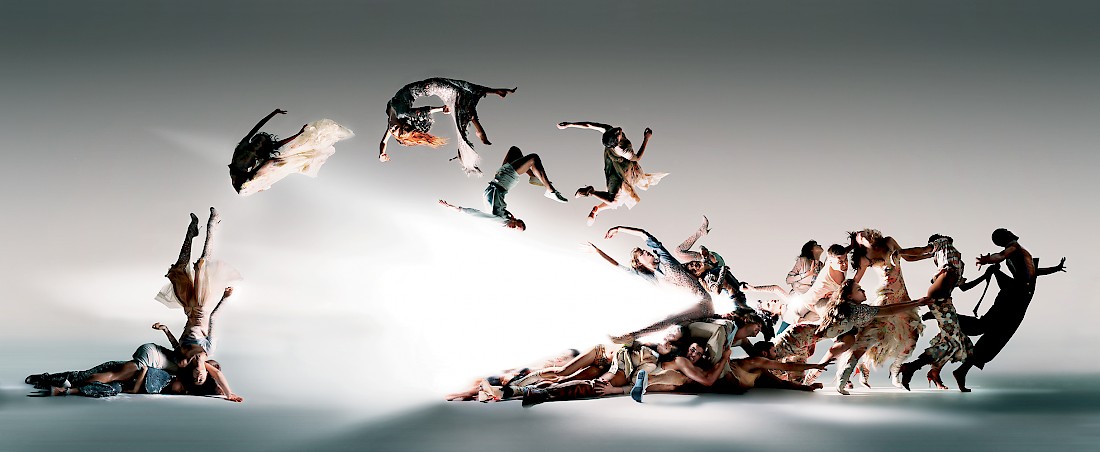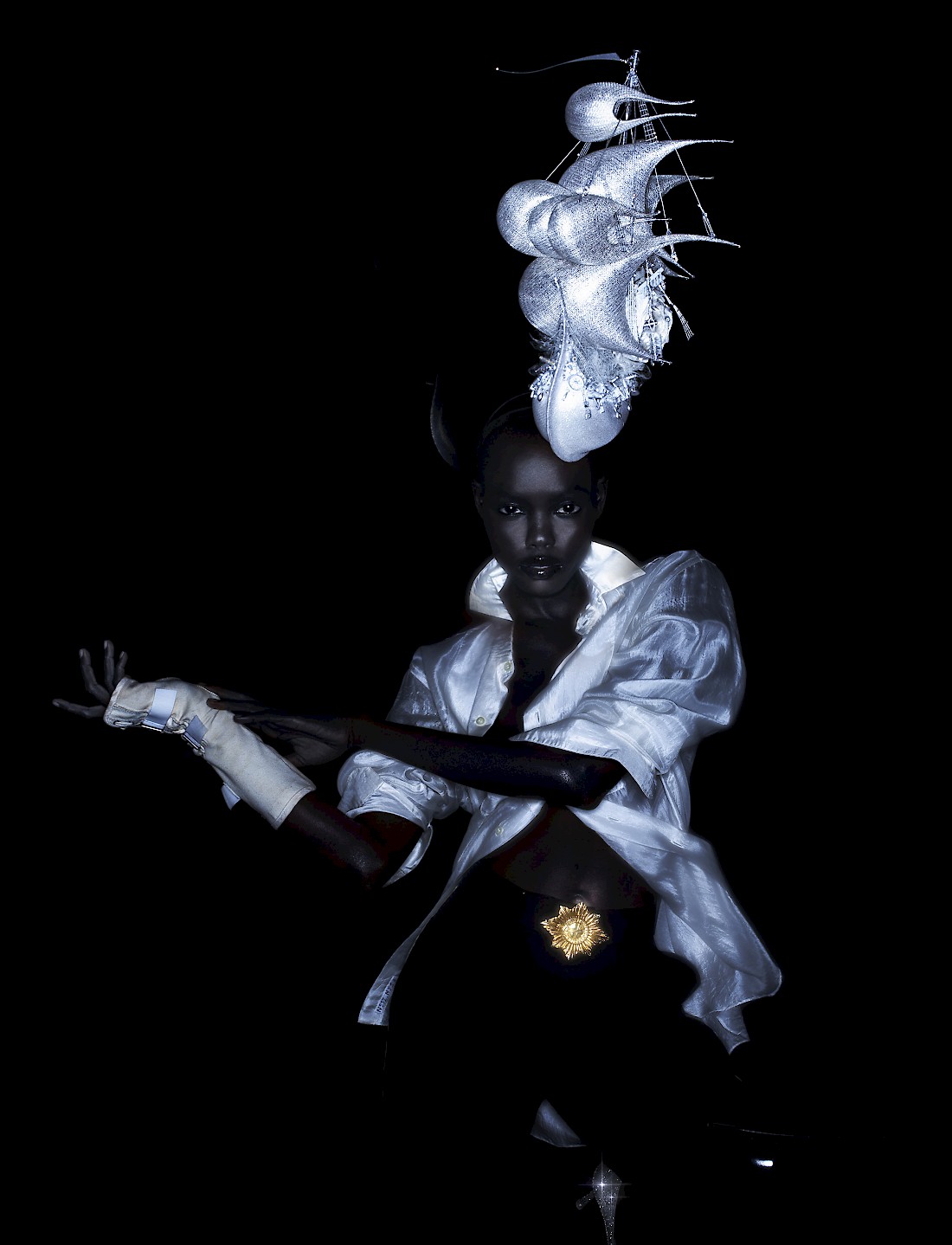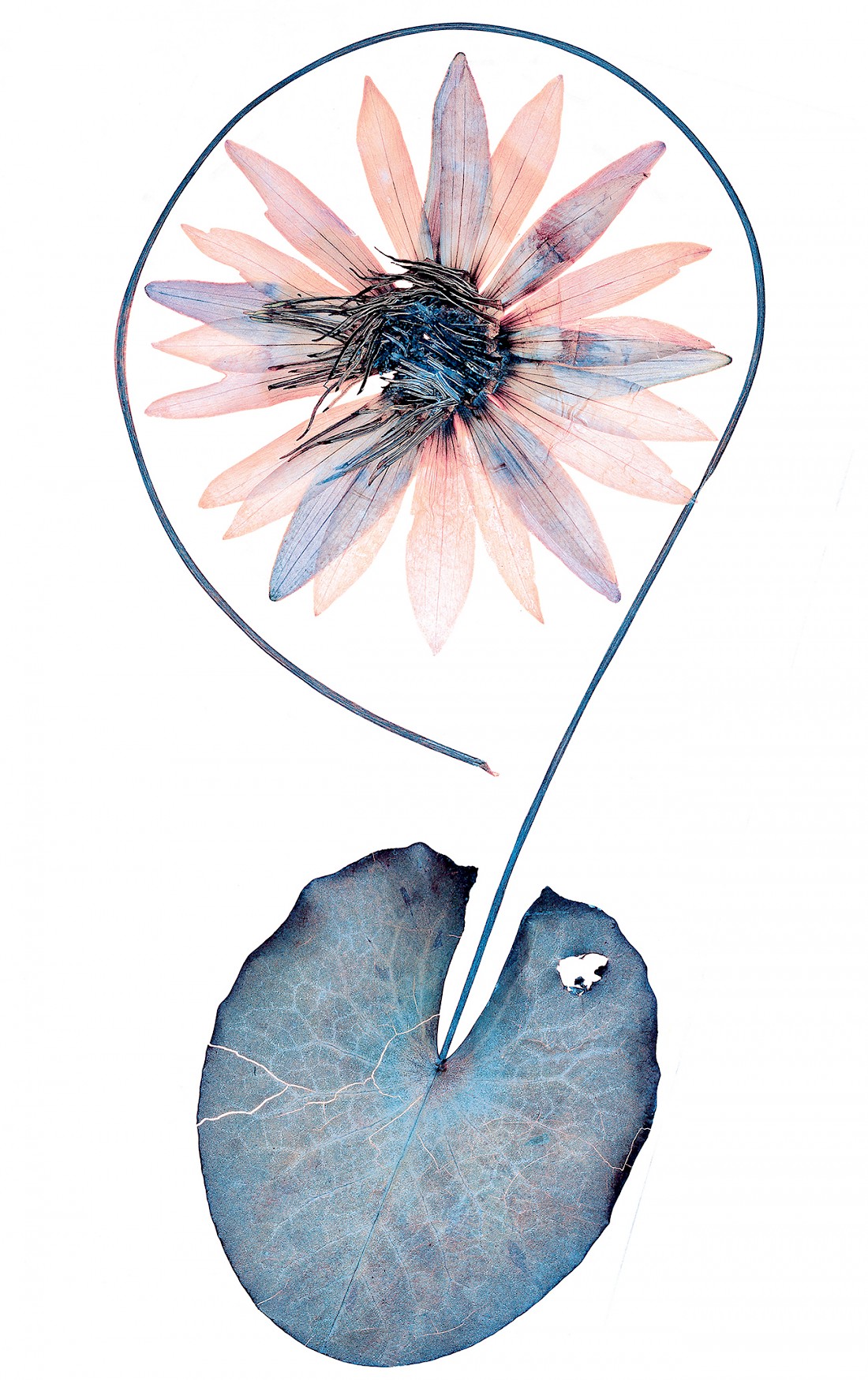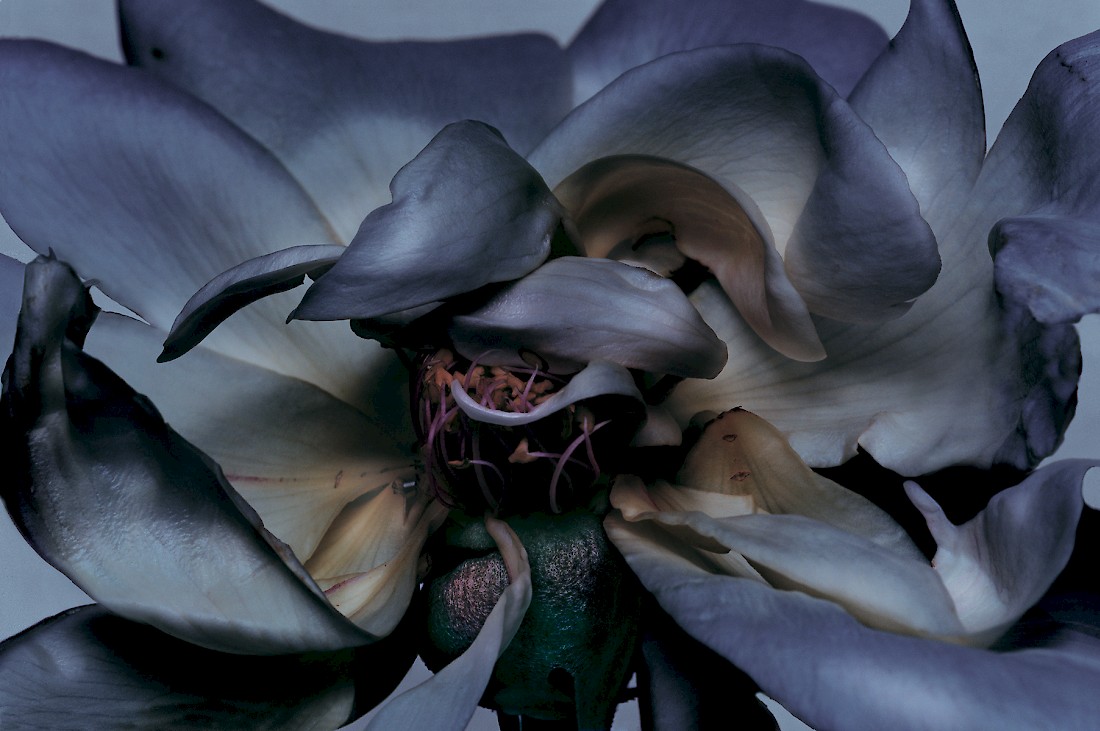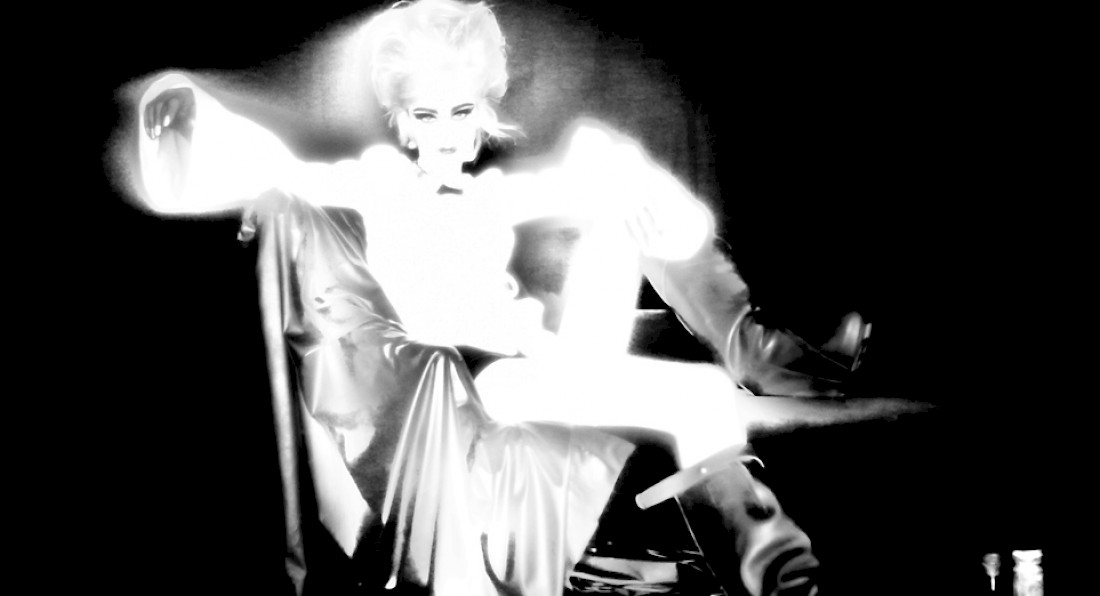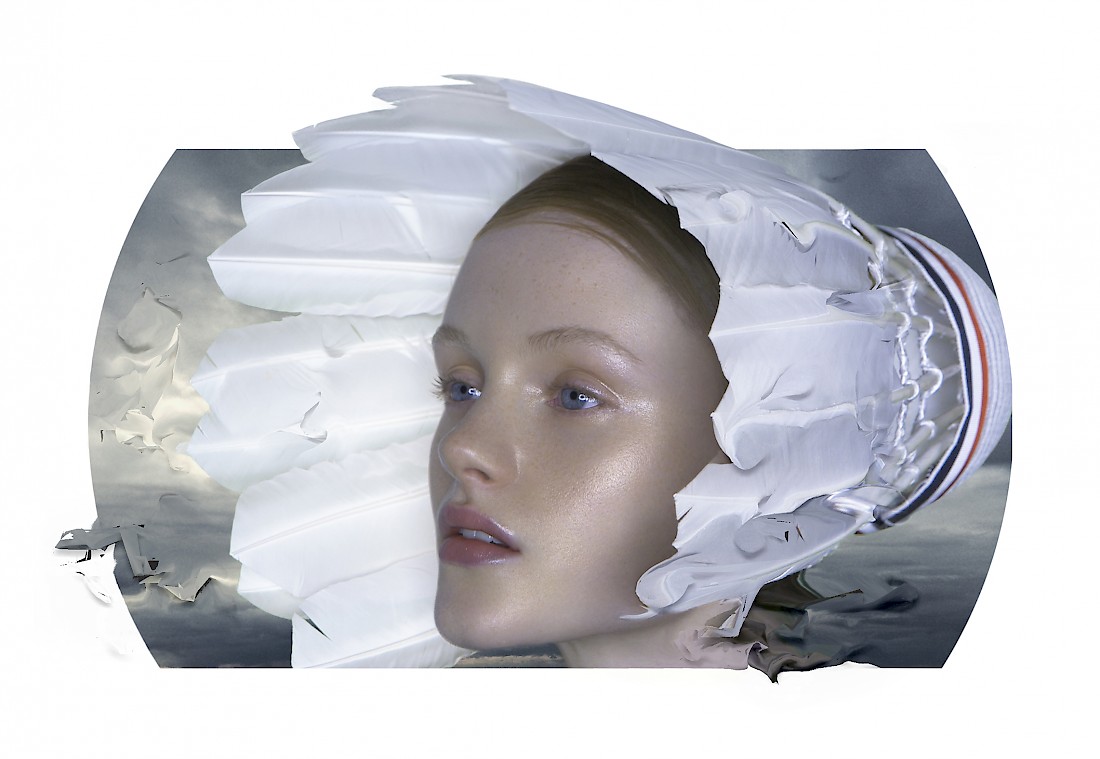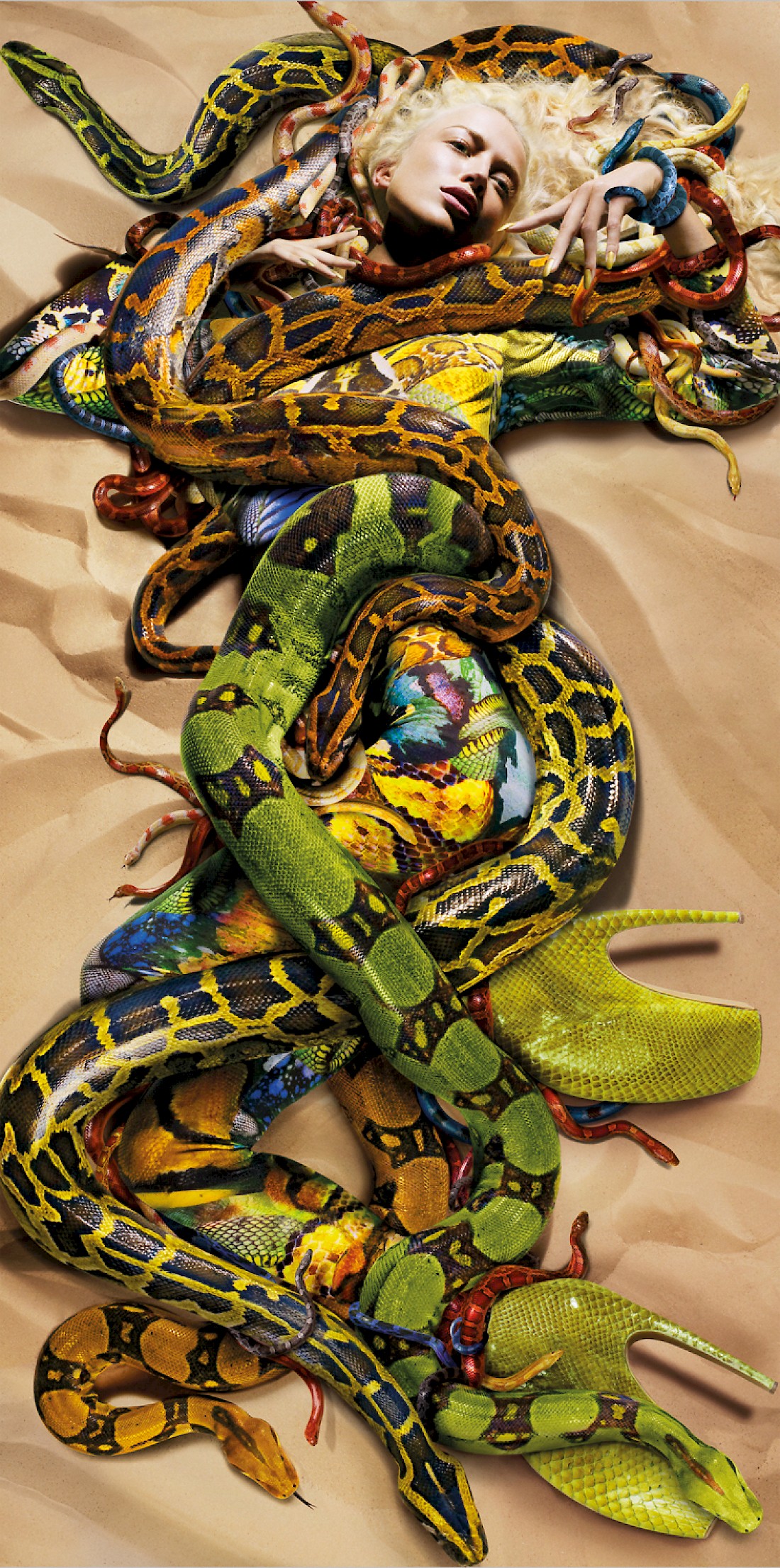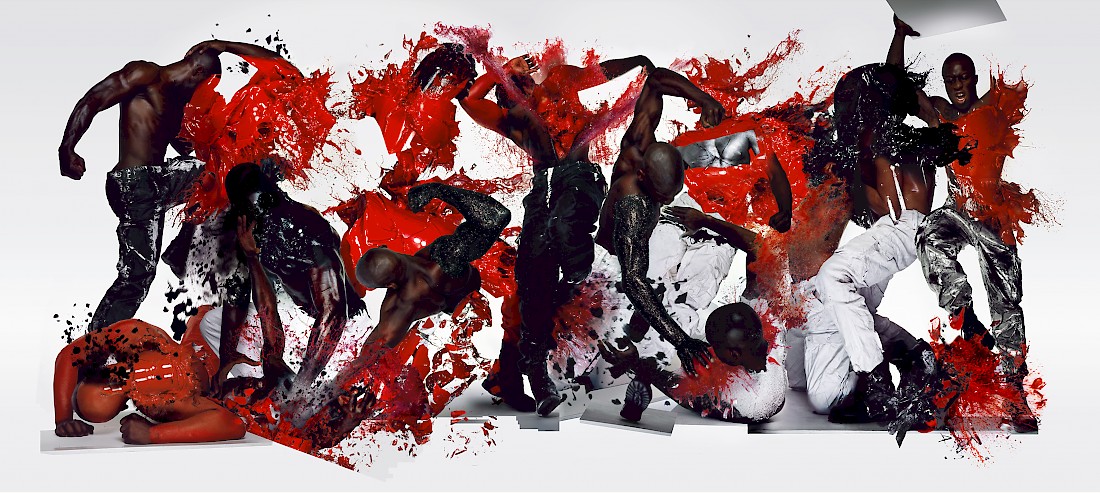For the past forty years, photographer Nick Knight has been ‘bringing it’ to the music, art, and fashion scene, from his first photos capturing the original Skins to his rock ‘n’ roll roots to his launch of the visionary digital SHOWstudio in 2000, Knight has been at the forefront of modern culture. Kenneth Richard caught up with him on the set of his latest collaboration with mentorship program “Photography: Mastered with Nick Knight” to talk technology, teaching, and helping others take the next step.
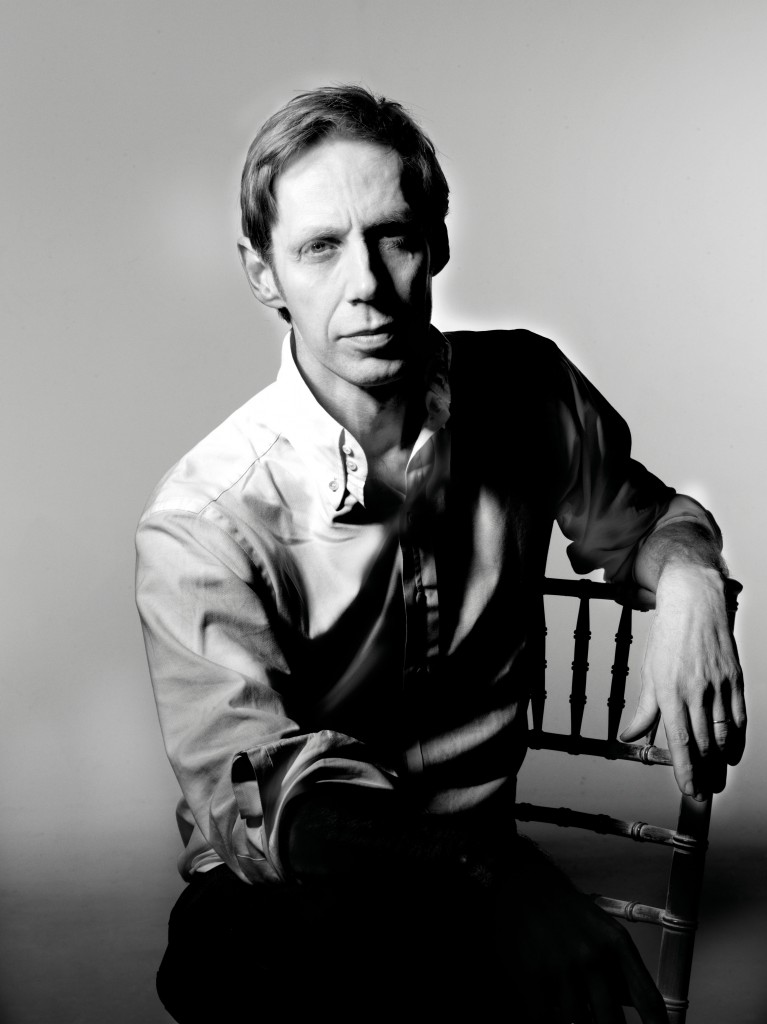
Kenneth Richard: Nice to catch up. You’ve been a vanguard for a while now, both in and out of fashion. Can you share how you got your start?
Nick Knight: How I got my start? Wow, that’s long ago. I went to art college and studied photography. Whilst at art college, I was involved with the Britain skinhead movement in the 1970s and I realized that there was no good book on skinheads so I wanted to create one. So I photographed the skinheads I was hanging around with, that was published, and I left art college with that as my dissertation and started working in the music business.
I worked for lots of music magazines and newspapers like the Face, New Music Express, NMA; i-D was just starting up, there were a lot of new generation publications which were just starting in the early 80s when I graduated from college. And it was just so natural after that, music was a big part of my life and it was very interesting to be able to photograph a whole range of people like George Clinton from Funkadelic to the Gap Band, a lot of those 70s and 80s American bands. I’d be off to photograph them in a hotel bedroom somewhere during press junkets. It’s difficult work because you’re probably the third photographer they’ve had to deal with that day so they’re not always in their best place. But it teaches you a lot. That’s how I got started.
I didn’t really get into international fashion until the mid 80s, when I worked for Yohji Yamamoto for 3 years. That was my first big break into international fashion. Previous to that, I had been very much part of what I guess you’d call the London scene of the 80s, so people like Dee Barry, Michael Clark, Boy George. I started out doing portraits for magazines, record covers if appropriate, so it wasn’t really fashion. The fashion that I was doing before Yohji Yamamoto was with this stylist, Simon Fox, we used to photograph for i-D magazine in the early 80s. But international fashion really came with Yohji Yamamoto.
Kenneth Richard: Did you have any mentors who shepherded you in that stage?
Nick Knight: I think you have lots of different mentors at lots of different stages in your life. I think there are always people who have strong influences on you. I’m not sure how much I would regard them as mentors; I just regard them as people I was working with, like art directors, or people who happen to be there for a reason on purpose. But yeah, there were lots of people.
For instance, I worked very closely with Terry Jones, who started i-D magazine; he taught me a lot about magazine work. I worked very closely with Marc Ascoli, a French art director to Yohji Yamamoto, and Peter Saville, a British graphic designer who did all the New Order sleeves. They are people who strongly shaped my work, who strongly shaped my knowledge of the fashion world and the music world and the magazine world, people whose influence, whose teaching I came to learn from.
Kenneth Richard: So you’ve decided to now impart a little bit of that teaching on to the next generation through your “Photography: Mastered with Nick Knight” program which you shot today, right?
Nick Knight: Yeah, we’re still in the process of shooting. I saw a student this morning and yeah, it’s just really a fantastic program and it’s sort of an extension of what I like doing. I’ve been running SHOWStudio for the last 15 years in order to give a platform to new artists. There are certain things I could do with the money that I made – I could have bought paintings and hung them all over my walls – but I don’t think that’s as interesting as giving new artists a platform from which to show their work.
I’ve always been excited by seeing new talent, partly because new talent has a new way of doing things, you learn a lot from looking at new artists, you learn a lot because their vision is very pure, they haven’t had to go through the set of difficulties and compromises that you’ve had to deal with once you’ve been working for 20 years. I think the arrogance of a new artist is actually something very exciting, it’s got a sort of determination to it, there’s such a power to it. Looking at a new vision is actually very rewarding to me and very much a two-way process. If they learn something from me, I’m very happy and flattered. But I’m also learning a lot from them.
Kenneth Richard: What sparked the program?
Nick Knight: I’ve got three children, all of whom are going through or have been through the education system here. And I was disappointed in the education system in many ways, starting with the tuition fees being very high. I’ve done a bit of lecturing at a couple of different universities and have seen how different photographers were teaching photography and image making. That’s all very well, teaching people about dark room technique and how to load a Hasselblad, reciprocity failure and balance factor and all those sorts of things, but actually, that’s got really nothing to do with how we create images these days. They are things that have got nothing to do with how you take a photo with an iPhone and that’s pretty much how people take photographs these days. So why don’t you teach that, why don’t you teach people how to use Photoshop, why don’t you teach people how to use Glitch, the app, or any of the incredible apps that are now available where you can completely change with the touch of a finger how an image looks? Because that’s where the new imagery is coming from. It’s not coming from someone sitting there with a roll of 12 exposures and putting film in the back of the Hasselblad, developing it in EP6 or whatever, and printing it on a silver chrome print. That does not happen anymore. However nice or unnice that was, that is not what people do, there is a new brand of image making coming out which is being done in a much more exciting way that’s going to largely be seen across the internet; that’s where people actually create work. And it’s not being taught at the colleges. But that’s what you should be teaching, not how to do work in a medium that’s getting less and less.
Kenneth Richard: So many get set with the tools they learned to use first, yet you sound extremely in synch with today’s tools. Do you find yourself embracing new technology quicker than most?
Nick Knight: I just think it’s where the energy is. I think it’s about following your desires without judgment. You know this ‘Oh, it was always better back in the day,’ I don’t like that way of looking to the past and saying it was so great when we used to… Actually, you know what? It’s always the same, it’s always difficult or it’s easy, every generation has it exactly the same.
I think the most exciting thing is the future. All of my work has been looking towards the future. I’m not someone who enjoys looking back; I’m somebody who enjoys looking forward. I’m excited about what I see at the moment. I’m excited by the new possibilities. Why would one not be? Now you can take a photograph, and at the touch of a switch, you can broadcast it across the globe, or you can make it into a three dimensional object. That’s exciting! I mean, no disrespect to all the great photographs that have been taken over the last hundred years, but there’s a different medium out there now which is exciting. I follow the energy and that’s the most exciting thing to be around.
There’s a fallacy that the old way is the ‘real’ way. Actually, no. However you take an image, however you want to articulate what you want to say, whatever comes to hand and seems right at that moment is the real way. If it’s using your phone to take an image and broadcast it over the internet, then that’s the right way to do it.
Some of the best photographs that were taken when photography was such a strong medium were taken by people like Robert Kappa on the D-Day landings, or the famous footage that was taken the day of the Kennedy assassination, those were the pictures that marked our time and they were literally shot on super 8, 10 mm lo-fi. They’re really important because of the moment. I’m not somebody who believes that photographs are only powerful when they are sharp and in focus. They are powerful because of something else.
Kenneth Richard: Now that you’re mentoring, what is it that you’re seeing in new people’s work that excites you?
Nick Knight: I spend a lot of time looking around on Instagram, on Tumblr, on YouTube; that’s where I find people expressing themselves. All the people I’m excited by I’m finding on Tumblr, YouTube, Instagram – whether it be models or young filmmakers, whether it’s image makers or stylists. I don’t look at magazines anymore, weirdly, I don’t look at books anymore, I look on the internet, because that’s where I see people living and expressing themselves.
I’ve got three kids, Karem just got into Parsons in Paris to study and he’s 18. His two older sisters are 20 and 22. None of them ever looked at magazines. They’ve always been on the internet. That’s where this generation lives so that’s where you’ll see the most exciting work at the moment.
What am I finding that is interesting? The sort of freedom of cutting across different media, that people now can be creating fashion illustration, they can be a filmmaker, they can be making fashion design, they can be somebody who does photography or image making, using lots of different media. There’s no longer that separation between those different media. For instance, there’s a girl called Ray Nadal who’s on Tumblr, she has a fantastic Tumblr, she also makes her own fashion, she also makes her own films, she’s also a great image maker, she writes very beautifully. That’s a whole lot of different skills. In a way, the sort of Renaissance person you used to hold in such respect is what everybody is now. This acceptance that you can work across a whole different range of skill sets with equal competence in all of them is very exciting.

Kenneth Richard: I would agree. Our videographer just made a film as a mood piece to write her book.
Nick Knight: (Laughs) Great! Now that we can take away the barriers between the different media, I think you really see people start to express themselves in a very exciting way.
Technically, what I’m very excited about is the whole idea that we’re moving into a different dimension of imagery. I can now work in 3D. I don’t mean that in the sense of holograms, I mean that in the sense that there’s another dimension that comes into image making. I can take an image and I can give it depth, I can take that image and rotate it. So you start out with something which could conventionally be seen as a photograph or a 2D image, and you can give that a sense of depth. I can make sculptures from 3D scans. It’s the same approach as if I were going to make a photograph so it’s the same skill set, but just a different outcome.
I think the whole idea is that when you free yourself up from the image being seen in a magazine, on a book or in a gallery, when you start to imagine it without those parameters, you can make an image for an environment which is digital or interactive. You start to be able to work with a lot more things, you can build images that rotate, that have sound, if you cut out the wall, you can put information across it; you’re much freer in the ability to imagine the images than if they were to be in a magazine or in a book, where you’re very limited to what that image can do. Making an image that is something you see when you put on a pair of glasses, that all of a sudden pops out of the wall on you and you’ve got information on it and you can change the sound on it or change the color by waving your hand, that’s a different sort of image making that excites me.
I think we’re moving into an environment that is much more immersive and much more interactive. I think things like the Oculus Rift are basics in that and they’re just these sort of tiny, infantile steps into a world which is completely different, a completely different way of using imagery. We’re starting to see it with the Google glasses and all loads of things, it’s just the beginnings of what’s possible. You know, take this down the line 10 years or 20 years – although I don’t think you have to go that far – and you’ll be looking at a very, very different world.
It’s not that far off. I think the way people can interact with their world, the way people interact with Facebook or Tumblr or Twitter, there is a whole power shift to the user rather than to the support. Look at the people who have millions of followers on Instagram, take them to Maxim, it’s only got a circulation of 100,000 maximum, who’s got the power there? The model, it turns out, with a hundred times more on her Instagram than the person who is employing her. There’s definitely a whole power shift going on.
Kenneth Richard: Nick, we look forward to seeing what comes out of the Mastered Program and your new work. Thanks for stepping away from the shoot for a bit.
Nick Knight: No problem at all. Nice to speak with you, Kenneth.

